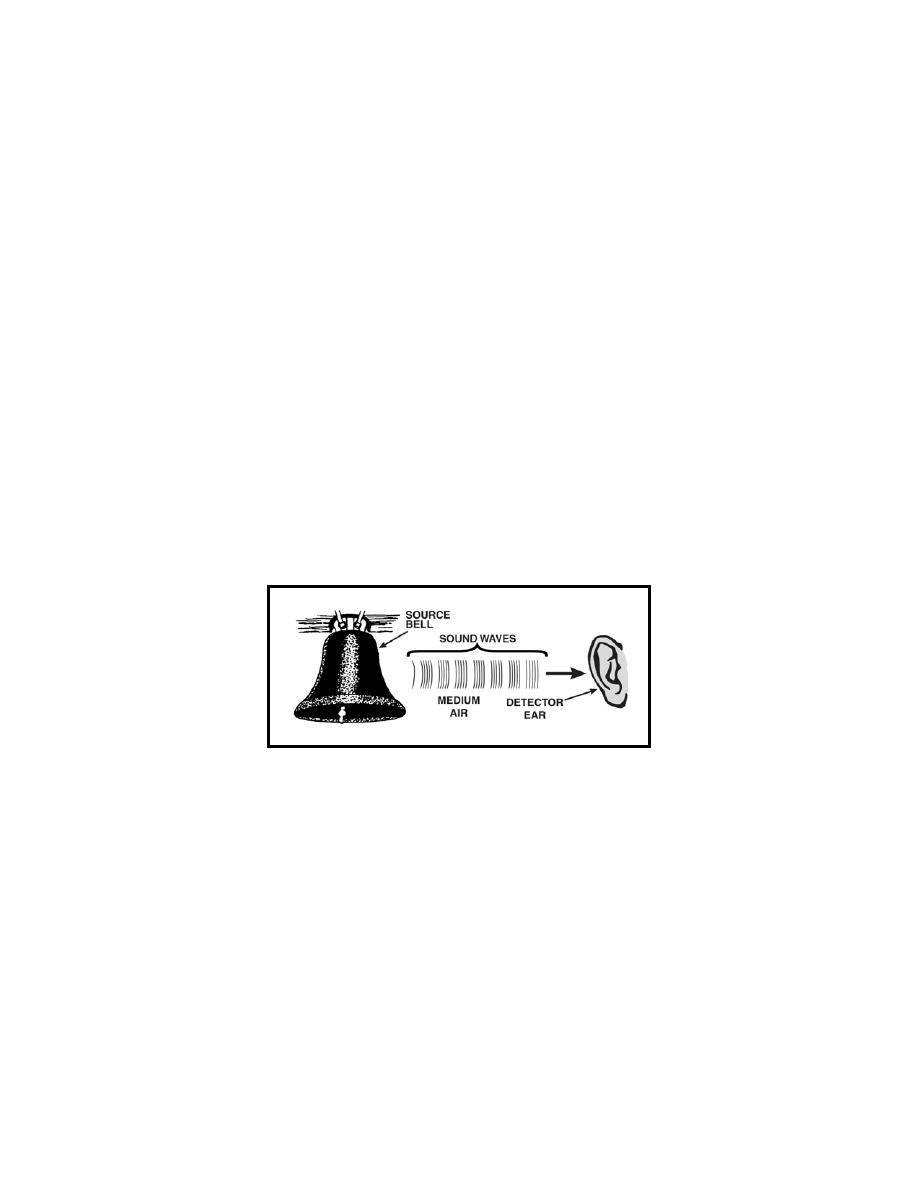
TC 9-64 _________________________________________________________________________
MEDIUM
1-17. We have used the term medium in describing the motion of waves.
Because medium is a term that is used frequently in discussing propagation,
it needs to be defined so you will understand what a medium is and its
application to propagation.
1-18. A medium is the vehicle through which the wave travels from one point
to the next. The vehicle that carries a wave can be just about anything. An
example of a medium, already mentioned, is air. Air, as defined by the
dictionary, is the mixture of invisible, odorless, tasteless gases that
surrounds the earth (the atmosphere). Air is made up of molecules of various
gases (and impurities). We will call these molecules of air particles of air or
simply particles. Figure 1-6 can help you to understand how waves travel
through air. The object producing the waves is called the source--a bell in
this illustration. The object responding to the waves is called a detector or
receiver; in this case, the human ear. The medium is air, which is the means
of conveying the waves from the source to the detector. The source, detector,
and medium are all necessary for wave motion and wave propagation (except
for electromagnetic waves, which require no medium). The waves shown in
figure 1-6 are sound waves. As the bell is rung, the particles of air around the
bell are compressed and then expanded. This compression and expansion of
particles of air set up a wave motion in the air. As the waves are produced,
they carry energy from particle to particle through the medium (air) to the
detector (ear).
Figure 1-6. The Three Elements of Sound
TERMS USED IN WAVE MOTION
1-19. There are a number of special terms concerning waves that you should
know. Many of the terms, such as cycle, wavelength, amplitude, and frequency,
were introduced in TC 9-60. We now discuss these terms in detail as they
pertain to wave propagation. Before we begin our discussion, however, note
that in figure 1-7, wave 1 and wave 2 have equal frequency and wavelength but
different amplitudes. The reference line (also known as rest position or point of
zero displacement) is the position that a particle of matter would have if it were
not disturbed by wave motion. For example, in the case of the water wave, the
reference line is the level of the water when no wave motion is present. With this
in mind, let us go on to our discussion of the four terms, as shown in figure 1-7.
1-6



 Previous Page
Previous Page
